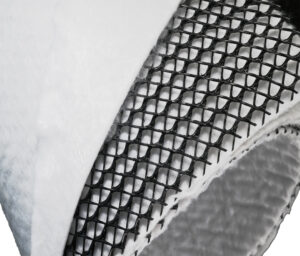What types of geogrids are there?
Geogrid is a civil engineering material used to reinforce soil, prevent soil erosion and protect land. The following are several common types of geogrids:
Plastic (polymer) grating: Plastic grating is the most common type of geogrid and is typically made from plastic materials such as polypropylene (PP) or polyethylene (PE). They are corrosion-resistant, have high tensile strength, are lightweight and have good durability, making them suitable for a variety of land engineering projects.
Steel-plastic composite grating: Steel-plastic composite grating is a composite material composed of steel bars and plastic grating. It combines the high strength and rigidity of steel bars with the corrosion resistance and lightweight features of plastic gratings, and can be used in engineering projects requiring higher strength, such as large retaining walls and roadbed reinforcement.
Fiberglass Grating: Fiberglass Grating is a geogrid made of fiberglass material. It has excellent tensile strength and corrosion resistance and is suitable for environments requiring durability and resistance to chemical corrosion, such as chemical plants, sewage treatment plants and marine engineering.
High modulus polymer grid: High modulus polymer grid is a new type of geogrid material with higher rigidity and load-bearing capacity. They are usually made of high-molecular polymers and are suitable for engineering projects that require greater load-bearing capacity, rigidity and stability.
Natural fiber grid: Natural fiber grid is a geogrid made of plant fibers (such as grass fibers). This type of grille can be used in some low-load or short-term projects, environmental protection projects, ecological restoration and other projects, and has low cost and degradability.
Does geomembrane installation require geogrids?
During the installation process of geomembrane, it is not necessary to use geogrid. Geomembranes are usually membrane materials used to achieve functions such as waterproofing, anti-seepage or preventing soil erosion.
Geogrids are engineering materials used to reinforce soil, improve soil bearing capacity, prevent soil erosion and protect land.
Although geomembranes and geogrids can be used together in some situations, they are not a requirement. Its use depends on specific engineering requirements and design options.
When it is necessary to prevent soil erosion or strengthen the soil, you can consider using geogrids on the surface of the geomembrane or in front of the soil. Geogrids provide additional strength and support, increase soil stability, and prevent soil from scouring or sliding.
However, in some cases it is feasible to use only a geomembrane without a geogrid. For example, for a simple waterproof layer or anti-seepage layer, the geomembrane can be laid directly on the soil surface without reinforcement.

Why does geogrid come with geotextile?
Geogrids sometimes need to be used with geotextiles, mainly to achieve better engineering effects and functions. Here are a few common reasons:
Separation effect: The combination of geogrid and geotextile can achieve separation effect. Geotextile can prevent finer particles from entering the coarse-grained soil layer from the holes passing through the geogrid, thereby effectively separating different types of soil layers or materials and preventing them from mixing and interpenetrating. This helps maintain the stability and performance of the geogrid.
Filtration function: Geotextile has a filtration function that controls the particle size in the soil and allows water to pass through. When geogrids are combined with geotextiles, the geotextiles can act as a filter layer, preventing fine particles or impurities from entering the geogrid openings and allowing moisture to pass smoothly, preventing buildup and clogging.
Protective effect: Geotextiles can provide certain surface protection to prevent geogrids from being affected by mechanical damage or sunlight and rain, and extend the service life of geogrids. Geotextiles can reduce the wear and damage of geogrids during construction and use, and protect their structure and performance.
Increased contact area: The combined use of geogrids and geotextiles can increase the contact area between them and enhance the adhesion and friction between them. This helps to improve the mutual anchoring effect between the geogrid and the soil and enhance the reinforcing effect of the geogrid.
Author
-

Founded in 2002, Tinhy's team focuses on the manufacturing, marketing, installation, application and research and development of geosynthetic materials.
View all posts




